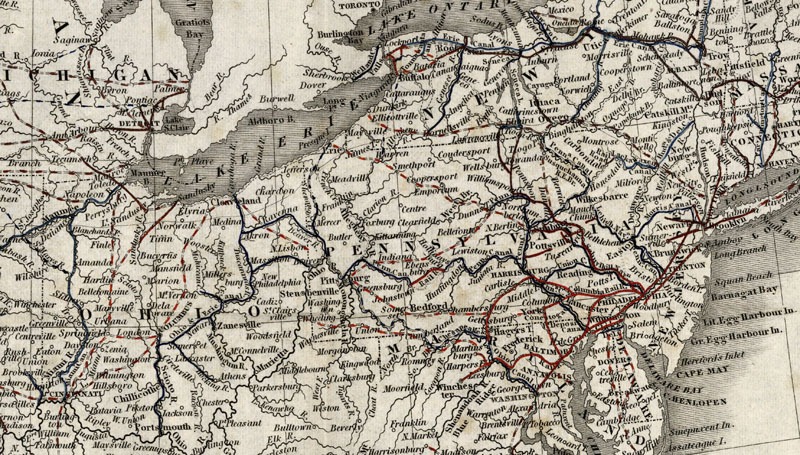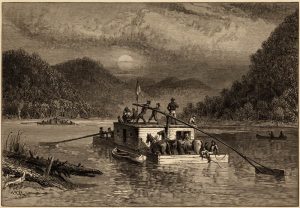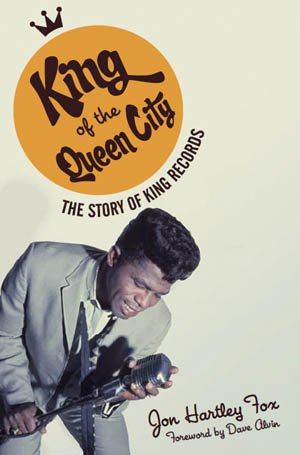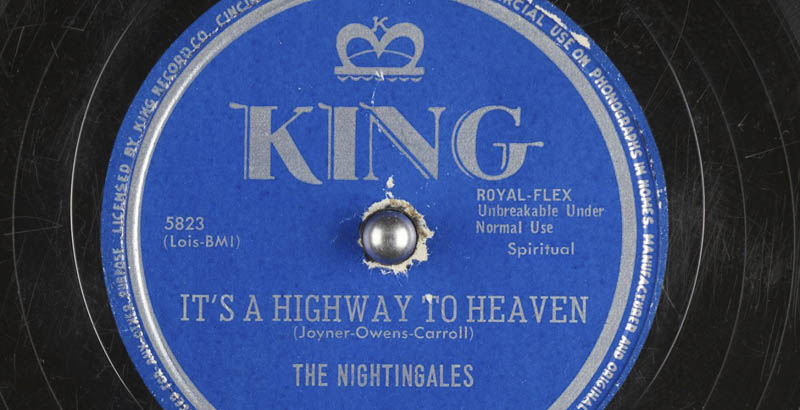The next city Highway 50 meets heading westward is Cincinnati, Ohio, coined “the queen city” for its sublime features since at least 1819. Highway 50’s course through Cincinnati mostly clings to the serpentine banks of the Ohio River, one of the oldest, longest, and largest rivers in the United States, which served as an early Interstate highway of its time, connecting the Ohio River Valley with the global economy by way of New Orleans. Cincinnati has always been a cultural crossroads due to its role as a transportation hub. Situated at the confluences of the Ohio River with the 300-mile long Licking River to the south and the 100-mile Little Miami River to the north, Cincinnati forged diverse cultural connections with the deep south, central Appalachia, industrial Pittsburgh, and the Midwest farm country of western Ohio. The canal-building decade of the 1820’s saw the completion of the Ohio-Erie Canal, The Erie Canal, and the Pennsylvania Canal System, all of which connected the Ohio River and Cincinnati to even wider markets including Canada and the Eastern Seaboard. The later arrival of railroads largely followed the ports of the existing river trading network, making Cincinnati an early railway hub as well.


Before the invention of the steam boat, navigation of the Ohio River was typically a one-way river trek run by Kaintucks, flatboat rivermen who would load their rafts with agricultural goods and merchandise, float them down the Ohio and Mississippi rivers to New Orleans, sell their goods and the lumber from their flatboats, then walk another of the oldest roads in the United States, the 700-mile Natchez Trace, back to Kentucky. The experience foreshadowed America’s slow transition from river-based transportation networks to overland highway routes, but the highways had a long way to go to beat the relative ease and speed of river transport.
The Ohio River also served as the border between the Southern United States and the North; Cincinnati was on free soil, but 1,000 feet across the river in Kentucky, slavery remained legal until the 1865 passage of the 13th Amendment. This geographical situation, along with Cincinnati’s position as a transportation hub, made it a vital channel for the Underground Railroad, the clandestine organized effort to aide slaves escaping to the North. For most slaves seeking to escape the United States altogether, Ohio was the most direct route to reach Canada by way of Detroit. Cincinnati’s proximity to, and partial economic dependency on the Southern institution of slavery, contrasting with its strong abolitionist backbone, contributed to a long history of racial and political tension including a plague of semi-regular race riots throughout its history.


Cincinnati also provided a significant venue for cross-racial cultural collaboration. About a mile northwest of Highway 50’s course through Cincinnati lies a dilapidated brick warehouse which only recently escaped demolition. The building was once home to Syd Nathan’s King Records, originally a hillbilly music label, which along with its race music imprint Queen Records launched the careers of dozens of the most eminent popular musicians of the mid-twentieth century. The artistic network of King Records was a microcosm of the cultural refinery of the city of Cincinnati, a natural crossroads between the urban North and rural South on the banks of the Ohio River.
Hillbilly and race artists with both King and Queen Records collaborated with each other so often, Nathan merged the two in 1947. The King Records’ roster reads like a laundry list of the the twentieth century’s most influential recording artists, including its most famous alum James Brown. The company produced hundreds of records from the middle of World War II until 1971. Urban recording companies in the era King Records emerged from typically kept strict divisions across genres according to racial lines. King Record’s unique contribution as a new type of forum simultaneously promoted multiple genres like blues, rockabilly, and swing. The consistent interactions between hillbilly and race artists at King Records primed the American music scene for a new trend of hybridized genres, including rock and roll.

Comments are closed.